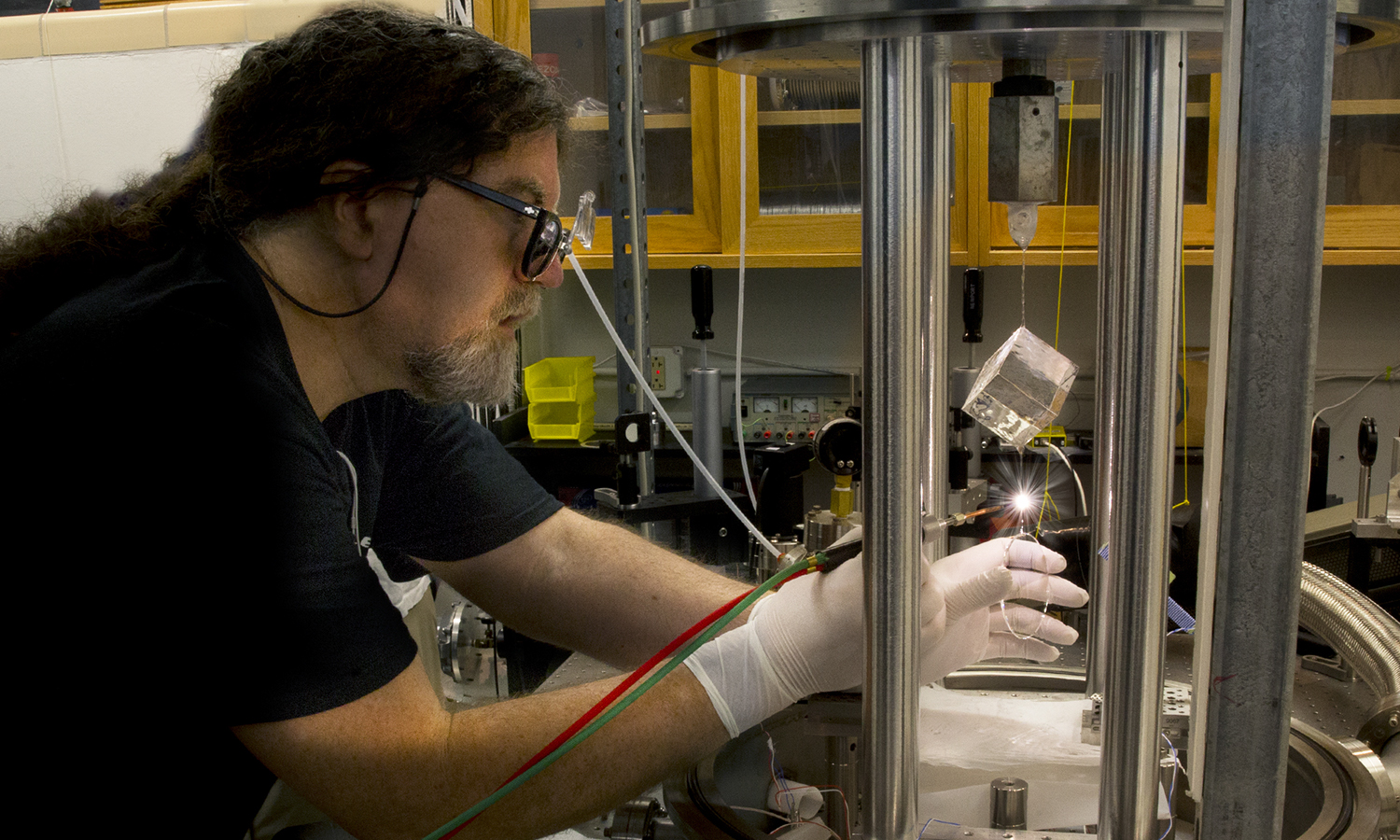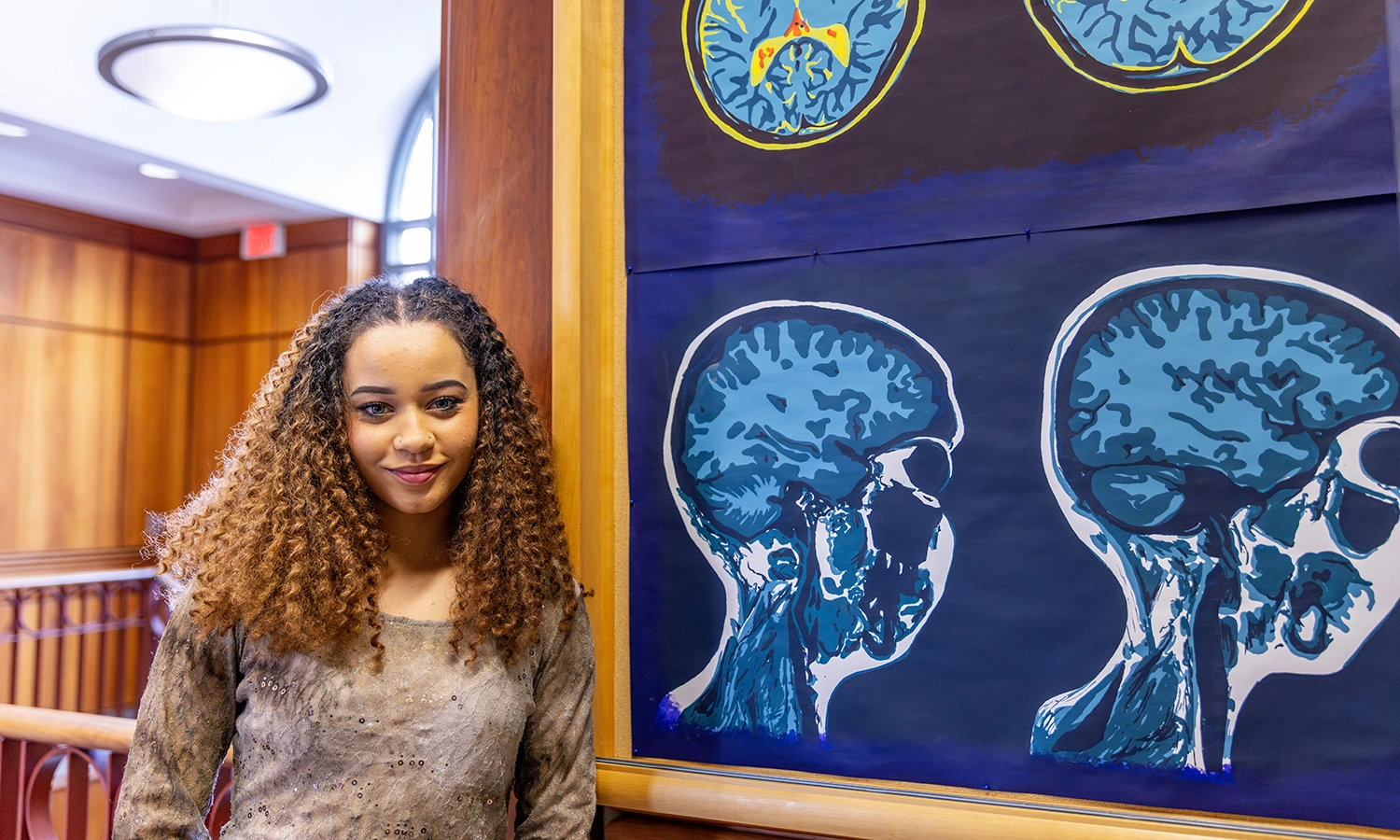
HWS News
20 September 2023 • STEM HWS Awarded $1M in NFS Astrophysics Grants
Grants from the National Science Foundation support the astrophysics work of Associate Professor of Physics Steve Penn, who contributed to the Nobel-winning research that confirmed the existence of gravitational waves.
In August, Hobart and William Smith was awarded a $1,077,454 grant from the National Science Foundation (NSF) supporting a three-year project to refine the sensitivity of the Laser Interferometer Gravitational-wave Observatory (LIGO) detectors. Led by Associate Professor of Physics Steve Penn, the research focuses on developing and characterizing crystalline mirror coatings for the 100 kg mirror planned for LIGO’s next major upgrade. These new mirrors will provide a significant increase in the rate of gravitational waves detections and allow clearer observations of black holes, neutron stars, and similar phenomena. The project will support research opportunities for undergraduate and graduate students.
Penn and his colleagues, Andri Gretarsson of Embry-Riddle Aeronautical University and Stefan Ballmer of Syracuse University, note in their proposal that since 2015, LIGO “has detected over 90 events, including the inspiral and coalescence of binary neutron star and binary black hole systems,” by observing gravitational waves, the ripples in the fabric of spacetime that Albert Einstein predicted with his general theory of relativity.
They estimate that with the support of the grant, their more advanced crystalline mirror coatings could reduce thermal noise “by a factor of 10 compared to the current mirror coatings. This significant advancement in sensitivity will allow the detection of many more events at much higher sensitivity.”
Penn was also awarded a continuation of a previous NSF grant in August. Over the next two years, this additional funding, totaling $108,714, will support Penn’s development of mirror coatings to enhance the sensitivity of Cosmic Explorer, the proposed third generation gravitational wave detector.
For more than 20 years, Penn has been part of the international group of researchers studying stellar phenomena and pursuing direct detection of gravitational waves to explore the fundamental physics of gravity and to advance astronomical discovery. Hobart and William Smith were among the first small colleges to join the LIGO Scientific Collaboration (LSC) when Penn joined the faculty.
Penn was a co-author of the Physical Review Letters article announcing the 2015 first ever detection of gravitational waves. In 2017, for his work pioneering the discovery of gravitational waves, Penn was among the international team of scientists recognized with the prestigious and highly selective Special Breakthrough Prize in Fundamental Physics, through which Penn was awarded a “Breakthrough Prize: Scientists Changing the World” medal. Later in 2017, the Nobel Prize in Physics was awarded to Rainer Weiss of MIT, and Barry Barish and Kip Thorne of California Institute of Technology for the discovery of gravitational waves, a scientific breakthrough made possible thanks to the global LSC research team, including Penn.
Penn’s original LSC research was on the mirror design for Advanced LIGO. He discovered how to significantly reduce the thermal noise in the material fused silica, which led to the selection of fused silica for the Advanced LIGO mirror substrates and suspensions. With that upgrade, scientists will be able to increase the amount of the universe that can be probed by a thousandfold.
An MIT-trained physicist, Penn joined the HWS Physics Department in 2002 following postdoctoral fellowships at University of Washington and Syracuse University. It was at Syracuse, in 1998, that he became a member of the LSC, an international group of approximately 1,400 researchers focused on the direct detection of gravitational waves. He currently serves as Chair of the LSC Council.



